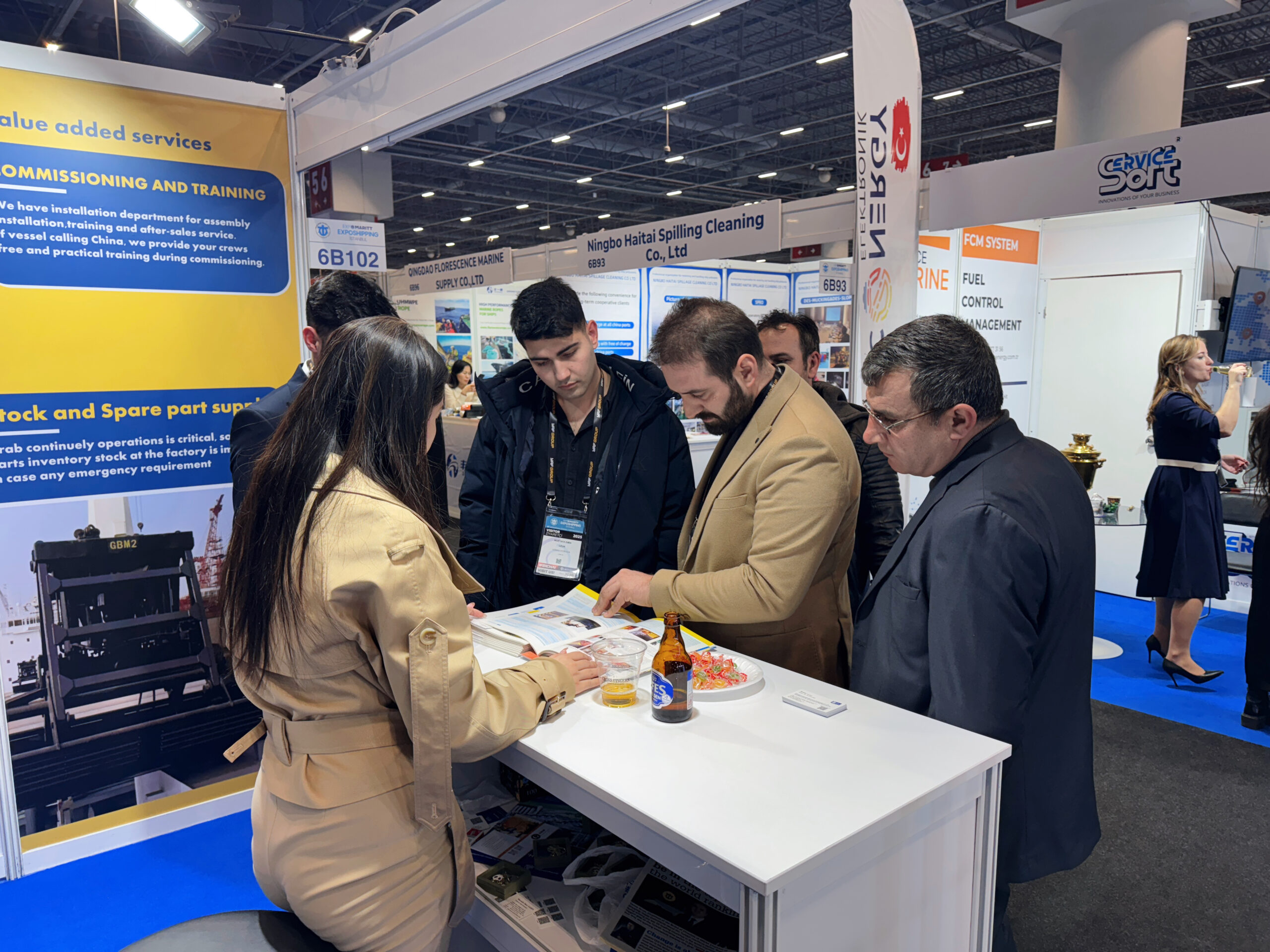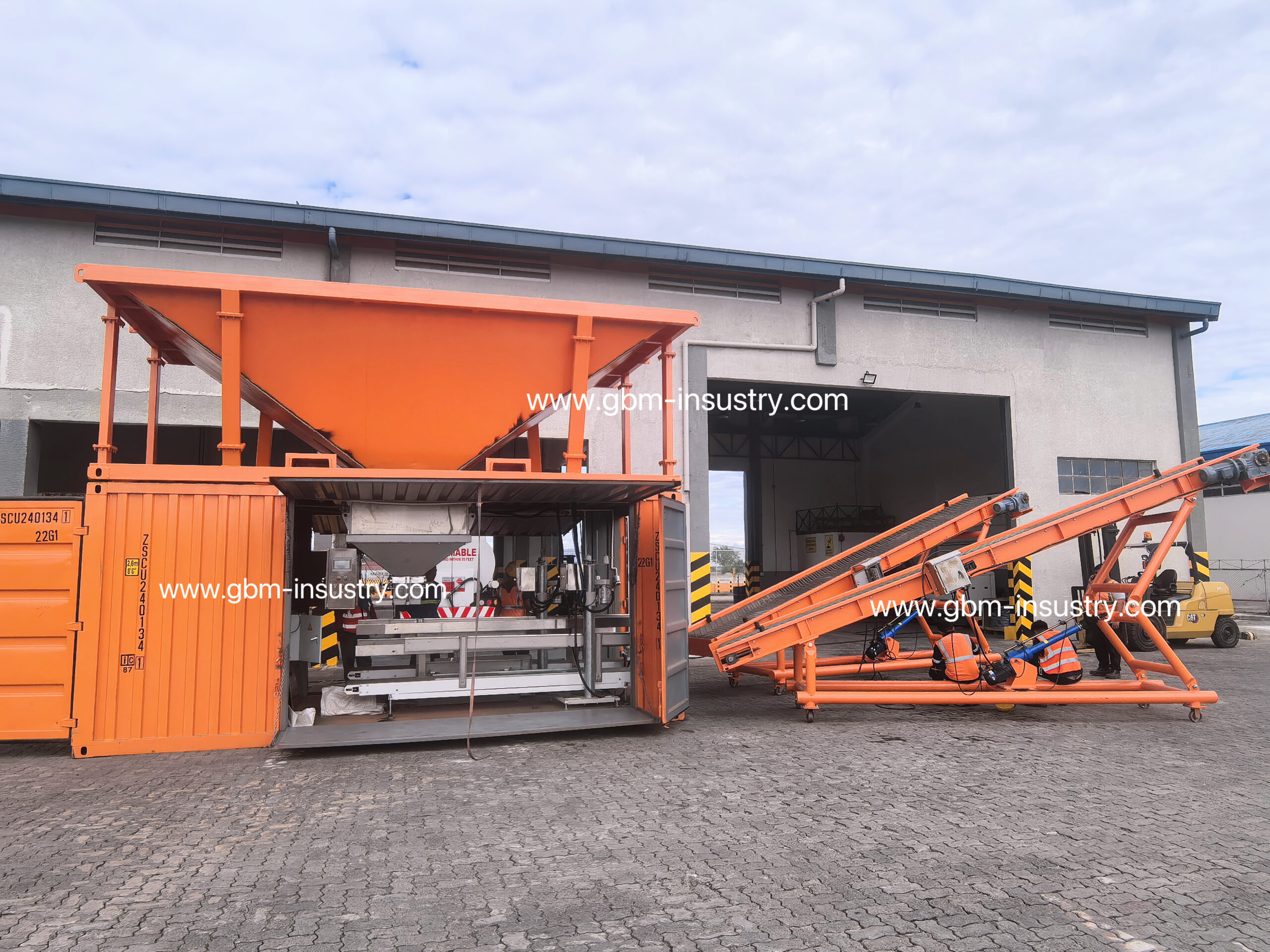By comparing the efficiency and safety of traditional manual operations and automated ship loaders, it was found that automation technology has obvious advantages in improving loading efficiency, reducing human error, and ensuring worker safety. The following mainly discusses the application of ship loader automation technology in bulk grain terminals.
Background of Ship Loader Automation Technology Research
With the continuous growth of global trade, the logistics industry has become a key driver of economic development. In this context, the efficiency and safety of cargo loading operations have become particularly important. Traditional manual operations suffer from low efficiency and high safety risks, necessitating the introduction of automated technology to enhance loading efficiency and ensure worker safety.
With the continuous advancement of information technology and control technology, automated technology has been widely adopted in industrial applications. As a type of automated equipment, automated ship loaders have precise control and operation capabilities, can achieve rapid cargo loading, improve operational efficiency, and reduce human error, and therefore have attracted widespread attention.
As an important cargo loading site, bulk grain terminals have a certain degree of complexity and danger in their loading operations. Traditional manual operations are easily affected by factors such as weather and human error, and there are certain safety hazards. The introduction of automated ship loaders can effectively address these issues, improve operational efficiency, and ensure worker safety.
Many research institutions and enterprises at home and abroad have begun to study the application of ship loader automation technology in bulk grain terminals. Through the optimization and improvement of the control system and mechanical structure of ship loaders, loading efficiency and safety are continuously improved. Countries are also increasing their investment in the field of automation technology, providing broader space for the research and application of automated ship loaders.
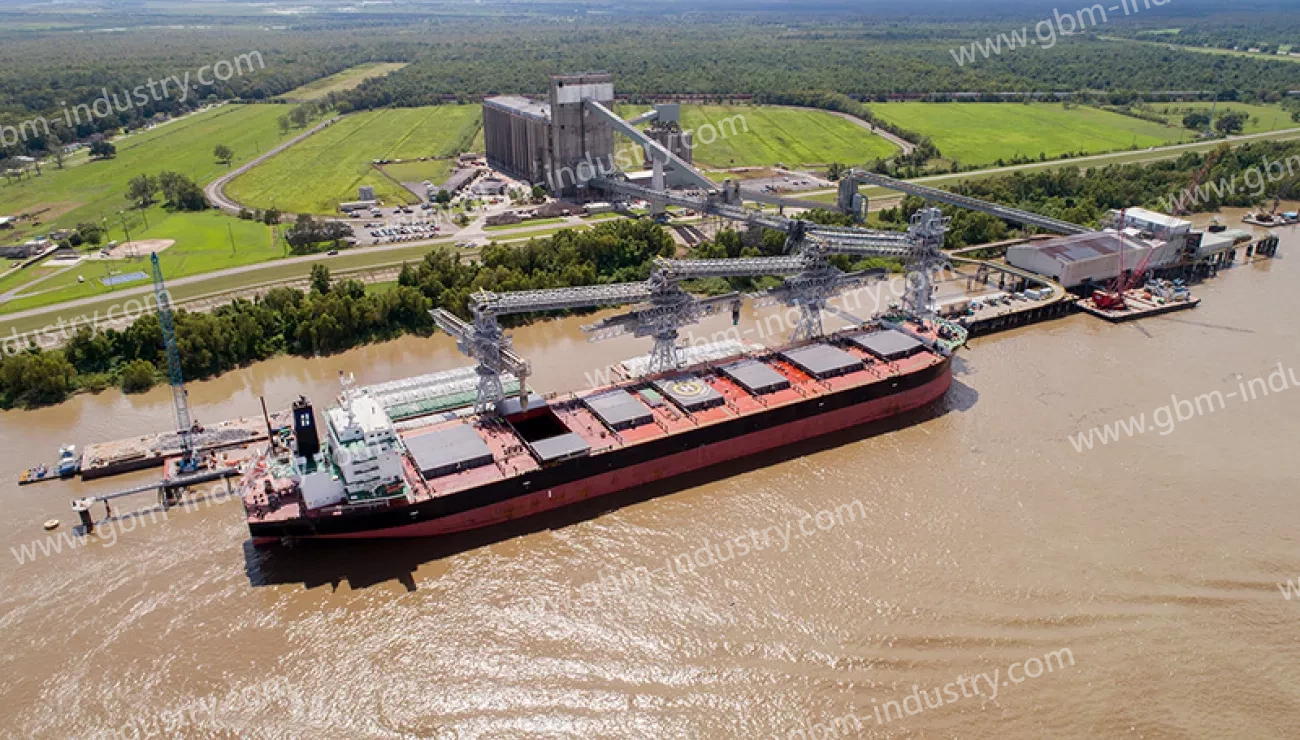
Current status and progress of ship loader automation technology research
The current status and progress of ship loader automation technology research is mainly reflected in the following aspects:
Automated control systems.
Currently, ship loader automation technology is mainly focused on the research and application of control systems. Through the introduction of advanced technologies such as high-performance sensors, PLC (programmable logic controllers), machine vision, and artificial intelligence [2], real-time monitoring and precise control of ship loaders can be achieved. Automated control systems can be intelligently adjusted according to parameters such as cargo type and ship size to improve loading efficiency and operational accuracy.
Intelligent technology applications.
With the development of artificial intelligence and Internet of Things technology, ship loader automation technology is also gradually moving towards intelligence. By applying artificial intelligence algorithms to ship loader control systems, autonomous learning and optimization of operations can be achieved, improving loading efficiency and adaptability. At the same time, the application of Internet of Things technology can achieve interconnection between ship loaders and other equipment, enabling information sharing and remote monitoring, further enhancing the intelligence level of loading operations.
Data management.
With the continuous development of big data technology, ship loader automation technology has also begun to shift towards data management. Through the collection, analysis, and mining of ship loader operating data, real-time monitoring and predictive maintenance needs of ship loaders can be realized, providing a more scientific basis for the operation and maintenance of ship loaders. Data management can also help optimize operational processes and reduce costs, thereby improving overall operational efficiency.
In summary, ship loader automation technology has made good progress in control systems, intelligent technology applications, and data management. In the future, with continuous technological innovation and improvement, ship loader automation technology will play an increasingly important role in bulk grain terminal loading operations, promoting the entire industry to move towards digitalization and intelligence.

Ship loader automation technology system design
Ship loader automation systems usually include the following key components:
Sensor module.
The sensor module is used to monitor the status and environmental parameters of the ship loader in real time, such as cargo position, ship position, wind speed, temperature, etc. Commonly used sensors include laser range sensors, cameras, temperature sensors, etc. The data from the sensor module can provide real-time feedback to the system, helping to achieve automated control of ship loading operations.
Control module.
The control module is the core part of the ship loader automation system and is responsible for intelligent decision-making and control based on the data from the sensor module. The control module usually uses equipment such as PLC (programmable logic controller) or industrial PC to achieve precise control of the ship loader through pre-set control algorithms. The control module can also communicate with other equipment to achieve coordinated operation of the system.
Human-machine interface module.
The human-machine interface module provides an operating interface for the ship loader automation system, allowing operators to monitor the system’s operating status, set parameters, and perform fault diagnosis. The human-machine interface module usually uses a touch screen or PC interface to provide an intuitive operating interface and real-time data display, allowing operators to easily interact with the system.
Data management module.
The data management module is responsible for the collection, storage, analysis, and application of data in the ship loader automation system. Through the data management module, the monitoring and analysis of ship loader operating data can be realized, helping to optimize the operation process and improve loading efficiency. The data management module can also combine big data and artificial intelligence technology to realize in-depth data mining and intelligent application, providing a more scientific basis for system operation and maintenance.

Safety control module.
The safety control module is responsible for monitoring the operating status of the ship loader and the attitude information of the ship to ensure the balance of the ship during the loading operation, and adjust the loading strategy in real time according to changes in the attitude of the ship to ensure the safety of the loading operation.
Application prospects of ship loader automation technology
Improve loading efficiency
The ship loader automation system can realize intelligent control and automated execution of ship loading operations, reducing human error and improving operational efficiency. By optimizing the operation process and improving the ship loading speed, it can significantly shorten the ship’s berthing time, reduce waiting and detention costs, and improve the ship loading efficiency of bulk grain terminals.
Reducing labor costs
Traditional ship loading operations require a large amount of manpower, while ship loader automation systems can reduce dependence on manpower and lower labor costs through remote one-to-many fully automated operations. Automation systems can operate continuously without the need for personnel shifts, reducing personnel safety risks and improving operational efficiency.
Improve operational safety
The ship loader automation system can reduce safety risks in ship loading operations through real-time monitoring and intelligent control. The system can detect and handle abnormal situations in a timely manner, prevent accidents, and ensure the safety of operators and equipment.
Reduce dust pollution
The ship loader automation system can reduce the dust generated during bulk grain loading operations through precise control of the extension and retraction of the chute. Through high-precision sensors and self-learning algorithms, the control effect is continuously optimized, making the ship loader chute more compatible with the material and the dynamic adjustment of the chute more accurate, thereby enabling the dust removal system to play a greater role, reducing dust, and meeting on-site environmental protection requirements.
Realize intelligent management
The ship loader automation system can realize real-time monitoring, analysis, and management of operation data, providing data support and decision-making references for bulk grain terminals. Through data analysis and mining, it can optimize operation processes, improve loading efficiency, and realize intelligent management and operation.
Promote industry development:
The application of ship loader automation technology will promote the entire bulk grain terminal industry to move towards digitalization and intelligence. Through the introduction of advanced automation equipment and technology, it will enhance the competitiveness and innovation capabilities of the industry and promote its development.
Outlook for ship loader automation technology
Overall, in the future, ship loader automation technology will develop in the direction of greater intelligence, autonomy, and sustainability to meet increasingly complex and diverse operational needs and improve port operational efficiency and competitiveness. The future development direction of ship loader automation technology is as follows:
Intelligence and autonomy
In the future, ship loaders will have stronger autonomy. Through the introduction of technologies such as artificial intelligence, machine learning, and big data analysis, ship loaders will be able to make autonomous decisions and operate intelligently, better adapt to complex and changing operating environments, and improve loading and unloading efficiency and safety.
Internet of Things and cloud computing
In the future, ship loaders will be integrated with Internet of Things technology to achieve interconnection between equipment, real-time monitoring, and remote control. Through cloud computing platforms, data analysis and optimization of ship loaders can be performed to improve operational efficiency and reliability.
Adaptive technology
In the future, ship loaders will have stronger adaptive capabilities and will be able to automatically adjust and optimize according to different cargo types and operational requirements. For example, the parameters and operating modes of the crane will be automatically adjusted according to the weight and size of the cargo to achieve more efficient loading and unloading operations.
Sustainable development
The future development of ship loaders will focus more on sustainability, including reducing energy consumption, reducing environmental pollution, and improving resource utilization efficiency. The introduction of clean energy, optimization of energy utilization efficiency, and reduction of waste emissions will become important directions for its development.
GBM mobile ship loaders equipped with automation technology
GBM ship loader advanced PLC technology: precise, efficient, and reliable automation of mobile ship loaders
Core and features of GBM mobile ship loader automation technology:
An industrial-grade high-performance PLC system is used as the “brain” of the machine control system, with powerful real-time computing capabilities and resistance to harsh environments (dust, humidity, vibration, temperature differences).
It integrates precision servo drives and closed-loop control algorithms to achieve millisecond-level precise interlocking control of key movements such as cantilever pitch, rotation, extension, walking, and belt speed.
Modular and standardized design for easy function expansion and rapid deployment and debugging
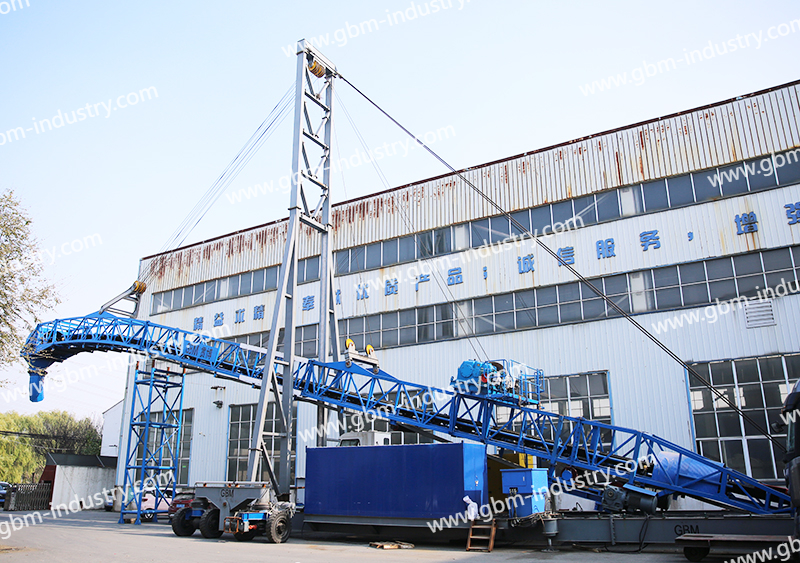
GBM 800tph mobile ship loader
Advantages and value of GBM mobile ship loader automation technology:
Unmanned/minimally staffed efficient operations: Through pre-set programs or integration with the Terminal Operating System (TOS), the PLC system can automatically complete the entire ship loading process (such as leveling, changing, and moving cargo), significantly reducing reliance on manual labor, enhancing single-unit operational efficiency and continuity, and meeting the demands of fast-paced loading and unloading operations.
Precise material distribution and environmentally friendly operations: Precision control ensures accurate material placement, effectively reducing spillage and dust, improving loading quality, and minimizing environmental pollution, meeting green port requirements.
High stability and low failure rate: The PLC system’s robust interference resistance and redundant design ensure reliable and stable operation of the equipment in the complex and dynamic terminal environment, minimizing unexpected downtime.
Flexible relocation and rapid adaptation: Modular design and standardized interfaces enable ship loaders to quickly move, position, and start new operations according to berth requirements. System parameters can be easily adjusted to suit different ship types and material characteristics, improving terminal resource utilization and operational flexibility.
Maintenance-friendly: The PLC system provides clear diagnostic information and operation logs, simplifying troubleshooting, supporting preventive maintenance, and reducing total life cycle operation and maintenance costs.
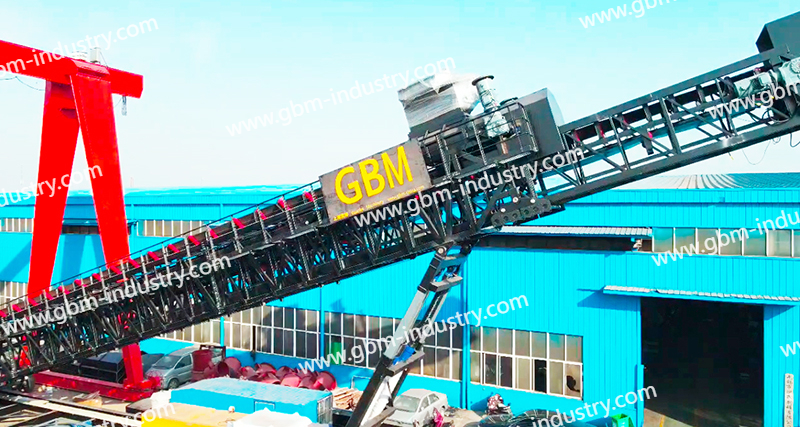
GBM 1000 tph telescopic boom mobile ship loader
Summary
Ship loader automation technology has broad application prospects in bulk grain terminals, effectively improving operational efficiency, reducing costs, enhancing safety, and promoting the development and progress of the industry. With continuous technological innovation and improvement, ship loader automation technology will play an increasingly important role in bulk grain terminal loading and unloading operations and become an important driving force for the development of the industry.
As an important cargo loading site, bulk grain terminals have a certain degree of complexity and danger in their loading operations. Traditional manual operations are easily affected by factors such as weather and human error, posing certain safety hazards. The introduction of automated ship loaders can effectively address these issues, improve operational efficiency, and ensure worker safety.



